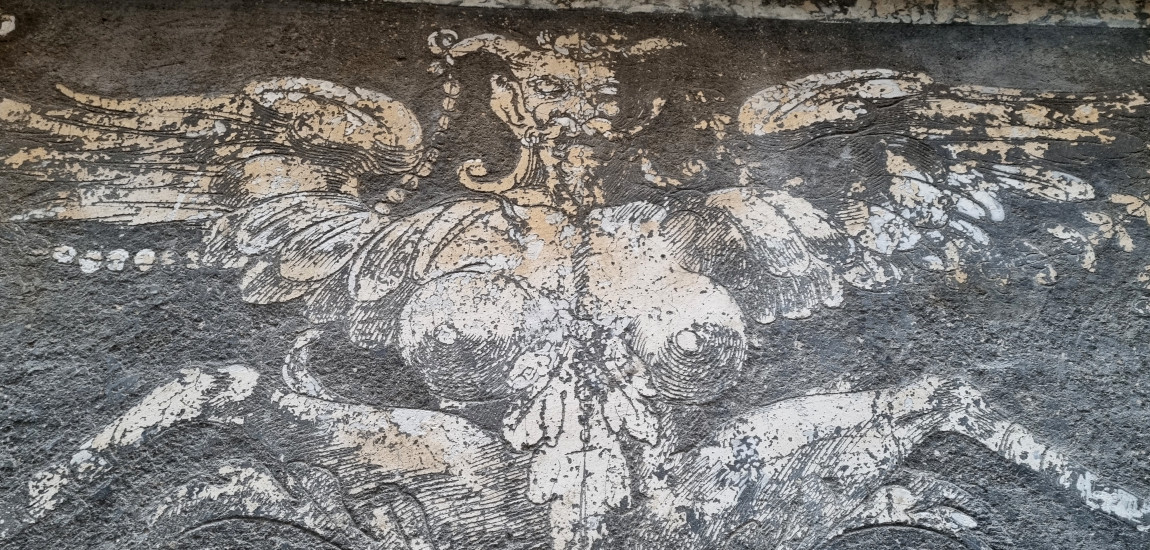
The "sgraffito" technique in Florence
Dating back to primitive paintings and already
widely used in the Middle Ages, the sgraffito
technique was all the rage during the Renaissance, particularly in
Florence and Rome, going in parallele with the spread of grottesca decoration.
The name derives from the pointed instrument used
for this technique, which was called “sgraffio”
(from “graffio”, meaning “scratch” in
Italian) and from the method of decoration that creates images by scratching
the work surface.
Giorgio
Vasari was the first to describe this
technique in detail in the second edition of his Lives of 1568, in the Life of
Andrea di Cosimo Feltrini (1477-1548), one of the main specialists in the
field together with Bernardino Poccetti, the master of grotesques.
Vasari explains how this is a hybrid technique made of
both drawing and painting, perfect for decorating the facades of houses and
buildings thanks to its speed of execution and its resistance to the elements.
The technique consists of spreading 2 layers of
plaster, the first one dark and the second one white. The drawing is
transferred onto the second layer using the sgraffito
technique: on the surfice is placing a cardboard with the image previously
punctured along all its lines with an awl and then it’s dusted with pigment
that will then pass through the holes leaving the trace of the drawing on the
plaster.
The
lines are scratched by removing some parts of the drawing with a sharp instrument
so as to bring out the dark plaster underneath and thus create a refined white
image on a black background.
Subsequently it is possible to give a finishing
touch with watercolor paint to create contrasts and shading.
You only need to walk through the streets of the
center of Florence to see one of these elegant buildings, richly decorated with
the sgraffito technique, appear from time to time. Some examples that you can go
looking for are the Palazzo di Bianca Cappiello and the Palazzo Corsini Suarez in
Via Maggio, Palazzo Guicciardini in the street of the same name, Palazzo
Ramirez de Montalvo in Borgo Albizi and Palazzo dell’Antella in Piazza Santa
Croce.



